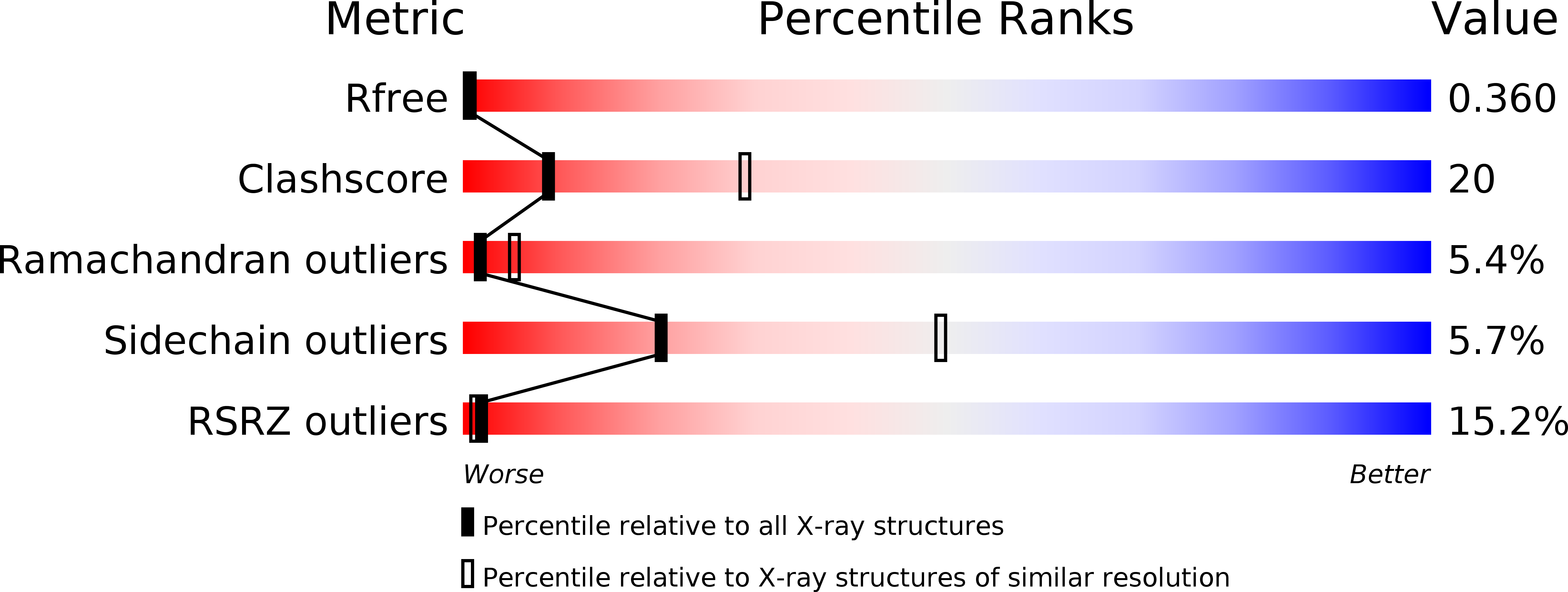
Deposition Date
2018-09-26
Release Date
2019-06-26
Last Version Date
2024-05-15
Entry Detail
PDB ID:
6HR5
Keywords:
Title:
Structure of the S1_25 family sulfatase module of the rhamnosidase FA22250 from Formosa agariphila
Biological Source:
Source Organism:
Formosa agariphila KMM 3901 (Taxon ID: 1347342)
Host Organism:
Method Details:
Experimental Method:
Resolution:
2.91 Å
R-Value Free:
0.36
R-Value Work:
0.32
R-Value Observed:
0.32
Space Group:
P 1 21 1


